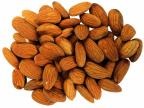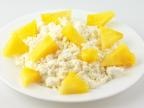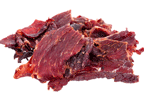8/20/2013
BY CHRIS ROSENBLOOM//PHD, RD, CSSD
Want to shave 1.82 seconds off your 100-meter free? How about 7.93 seconds off your 200 IM? David (not his real name), a 16-year old swimmer did just that by improving his food choices to support his training and conditioning. He dramatically slashed his times after committing to improving his food choices in the months leading up to a national-level meet. His reward? His best times…ever. How did he do it? He completed a detailed 3-day food and activity record and then had it analyzed by a Registered Dietitian/Nutritionist who individualized a plan to build on his already good habits. Like many of you, David already practiced sound dietary habits: he ate before swim practice, he timed his intake to support recovery, he ate high-quality protein, and he got sufficient calcium and vitamin D through foods.
What he needed to tweak in his diet was:
- Increasing total calorie intake. He was averaging 70-85% of the needed calories to support growth, physical development and training
- Increasing carbohydrate intake. He was getting 44% of his calories or 6.2 grams of carbohydrate per kilogram of body weight and he needed 6-8 grams per kilogram to support training, so he increased carb intake to the higher end of the range
- Decreasing total fat intake. His fat intake was 35% of total calories and while the recommendation is to keep fat intake in the range of 25-35%, an athlete who needs more carbohydrate will need to decrease fat intake to accommodate the need for muscle fueling carbs.
- Choosing more nutrient-rich foods to increase the intake of 2 nutrients that were low in his diet: vitamin E and iron.
David used these 4 simple strategies to boost his nutrition:
 Increased fruit and veggie intake to boost carbohydrate intake
Increased fruit and veggie intake to boost carbohydrate intake - Added a fruit cup to morning after-practice swim snack
- Added an apple, pear, orange, etc. to lunch
- Added an additional vegetable to dinner like a baked sweet potato, green beans, cauliflower, or any other veggie he liked.
- Snacked on summer fruits: watermelon, cantaloupe, berries
- Topped his favorite dessert, pound cake, with berries
- Chose more iron-rich foods
- Substituted corn dogs with a roast beef sandwich or a small cheeseburger
- Ate dark-meat chicken (leg, thigh) in addition to chicken breast

- Included a vitamin C source with breakfast, like orange juice, strawberries, or other citrus fruit, like “cuties”
- Tried grilled flank steak for dinner. It’s a lean cut of beef with plenty of iron
- Decreased high-fat foods
- Tried lower fat ice cream instead of full-fat ice cream
- Substituted low-fat hot dogs for full-fat hot dogs
- Reduced milk fat from 2% milk to 1% or fat-free milk
- Increased calories with healthy, tasty foods
- Snacked on nuts and trail mix (good source of vitamin E)

- Ate pineapple (contributed with love from his aunt’s own pineapple tree)
- Increased sports drink from 8-oz to 12-16 ounces
- Snacked on cottage cheese and fruit with whole grain crackers
- Drizzled vanilla Greek yogurt with honey and added chopped walnuts
- Snacked on nuts and trail mix (good source of vitamin E)
It wasn’t always easy, as David said sometimes he just wasn’t hungry, and it was hard to reach the higher calorie  level. But, improving nutrition paid off and now he is on a quest to improve his standing at his state meet. Last year he finished 25th in the 100 and 200 free and the top 24 finishers move on... This year I think he will one of the swimmers moving on.
level. But, improving nutrition paid off and now he is on a quest to improve his standing at his state meet. Last year he finished 25th in the 100 and 200 free and the top 24 finishers move on... This year I think he will one of the swimmers moving on.
Chris Rosenbloom is the sports nutrition consultant for Georgia State University Athletics and is the editor of the Academy of Nutrition and Dietetics Sports Nutrition Manual, 5th edition, 2012. She welcomes questions from swimmers, parents and coaches. Email her at chrisrosenbloom@gmail.com.

